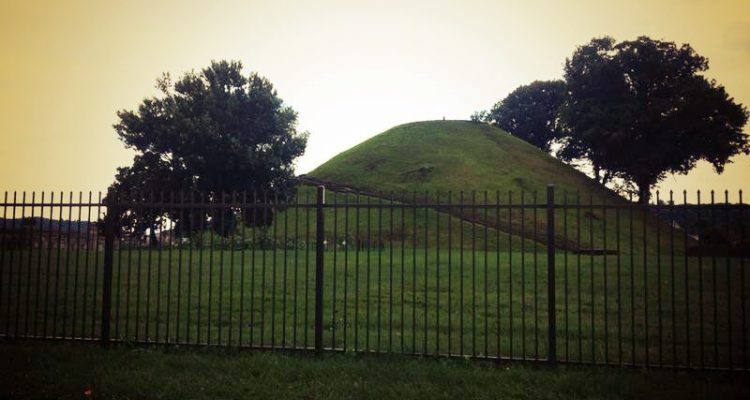Photos by Glynis Board
Story courtesy of Weelunk partner West Virginia Public Broadcasting
Accompanying story here: Listen
Scattered across the state, often just under the surface veneer of West Virginia, buried evidence exists of communities and times gone by. Nowhere is that more obvious than in Moundsville at the Grave Creek Mound Archaeological Complex. The curators there work daily next to a giant Adena Indian burial mound, preserving artifacts found over the years throughout the state.
The Mound in Moundsville
If you drive into Moundsville, across from what looks like a giant castle that is the former state penitentiary, there’s this swollen grassy mound. It kind of looks like a giant land turtle with a couple of big trees and flat, stone stairs winding up its back. The mound stands almost as tall as a 6-story building and from the top you can see for miles. It’s one of the largest conical mounds in the United States.
“The mound was built over 2000 years ago, roughly 250 – 150 B.C. by people that archeologists call the Adena people,” said Andrea Keller, the Cultural Program Coordinator at the Grave Creek Mound Archaeological Complex. “They are prehistoric native Americans.”
Keller gives tours, among other things, where she tells visitors all we know about this mound, which is surprisingly little.
“We do know it was used as a burial mound,” she said, “It had two main tombs, one with one individual and one with two individuals – two rather elaborate tombs for just three people.”
Keller explains how the family that owned the mound in 1838 decided to excavate it with the business idea of creating a museum with the artifacts they’d find — one you paid to go through.
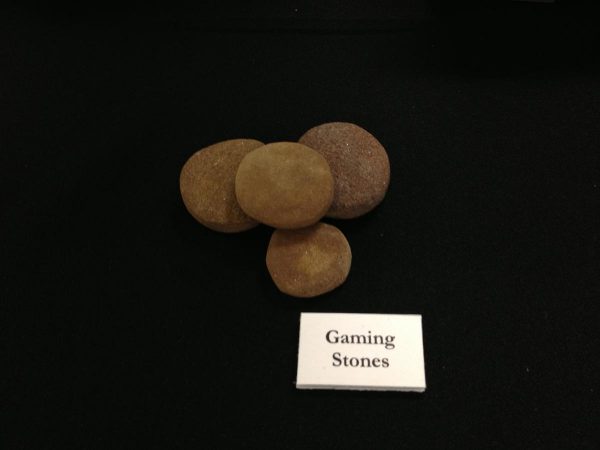
“They were going to charge 25 cents for an adult and half of that for a child,” Keller said. “So with high hopes they excavated from the base, and when they got toward, the center they found that first main tomb with the two individuals.”
She says they would have found a hollowed-out tomb, rotting logs, two skeletons, shell beads, maybe some ornaments.
“And not a whole lot else. They were probably kind of disappointed.”
Keller says they “would” have found these things, but the truth is we really don’t know for certain what they found 177 years ago. Much of what was excavated has been lost over the years. Including the skeletons.
History of the property
250-150 B.C. Construction of the mound took place in successive stages.
1838 The first recorded excavation of the mound took place.
1909 The state of West Virginia bought the mound in the early 1900s (with some help from area school children).
1978 The Delf Norona Museum was constructed next to the mound. This large, modern brick building with pyramid-shaped skylights is meant to be an architectural tribute to prehistoric times.
2007 Construction of the archaeological complex began.
Modern Archeology
The archiving skills of the time were less sophisticated than they are today. No one understands that better than Amanda Brooks and Heather Cline, curators at Grave Creek Mound Archaeological Complex.
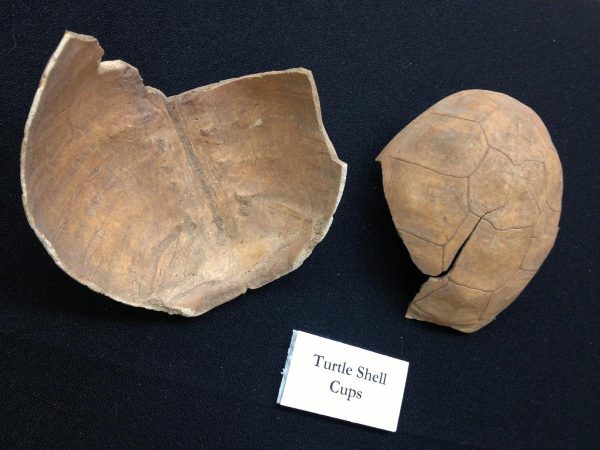
“The majority of our artifacts that we’ve rehoused are all stored up in this area,” says lead curator, Heather Cline as she stands in a 9,600 square foot addition to the museum. The archeological complex was designed to house West Virginia’s artifacts. All of them.
“We have movable shelving units, climate-controlled, humidity-controlled temperature is also regulated.”
This is the archaeological curation facility for the whole state of West Virginia. Cline explains that modern archeology isn’t all tomb-raiding and dodging ancient booby-traps.
“In archeology,” Cline explains, “10 percent of the work is done in the field, 90 percent is in the lab.”
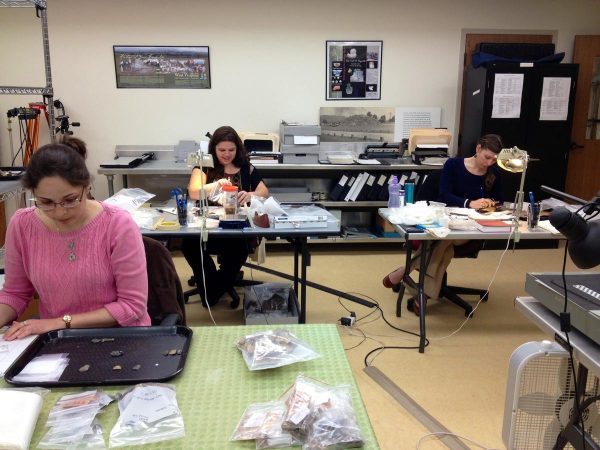
The Lab
In the archeology lab, Cline hovers over a desk with trays of objects.
“I’m laying out some artifacts from a Confederate Civil War camp, excavated in 1963, by Clifford Lewis along with youth science campers. They excavated parts of camp in Pocahontas County, which remains pretty untouched from 1861 when it was built there.”
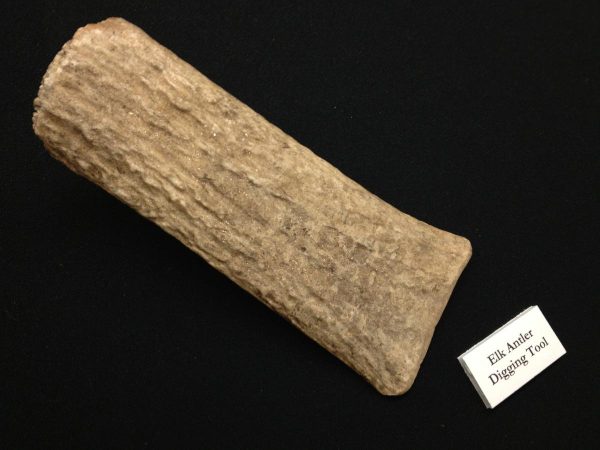
Buckles, spoons, knives, buttons – Cline carefully is going through what was collected in the ’60s, categorizing and entering each object into a database. She says historic artifacts are most interesting to her, but there are interesting prehistoric artifacts, too.
Bird bone flutes, ceramic gaming stones, porcupine quill needles, musical instruments made out of rib bones, elk horn tools – many of these artifacts came from the prehistoric Mount Carbon village site from Fayette County. Last year Cline and Brooks cataloged 43,000 artifacts from the site – most of which date back to the late 1400s – early 1500s.
Rehousing History
“We spend the majority of our time rehousing old collections,” Cline said. “We’re rehousing 2000 boxes. It’s a slow process getting everything up to archival standards so that they’ll be around for researchers.”
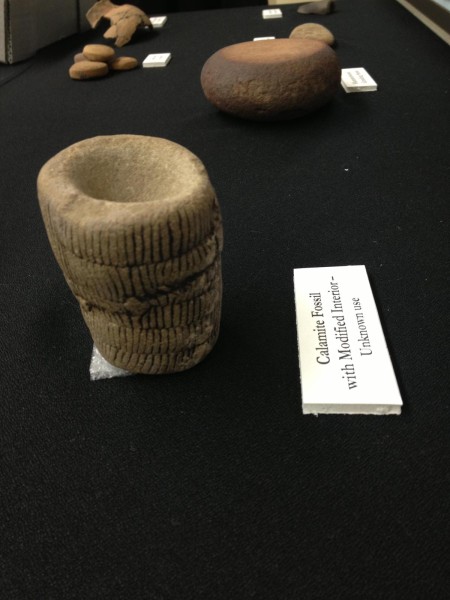
“Rehousing” is when experts like Cline take excavated artifacts out of their original paper bags and place them into standard, acid-free boxes and plastic bags that will better preserve them for researchers in the future.
Last year Cline and Brooks cataloged 43,000 artifacts from the site — most of which date back to the late 1400s and early 1500s. The entire site was packed into 100 boxes that it took the two curators about a year to rehouse. There are hundreds and hundreds (more than 1,500) more to rehouse. But Cline isn’t daunted, even though she knows she won’t see all of the artifacts rehoused in her lifetime. She takes it one box at a time. And as an archeologist, she has an acute sense of curiosity and wonder.
“It’s like Christmas; you never know what you’re going to get! You just never know what you’re going to get.”


